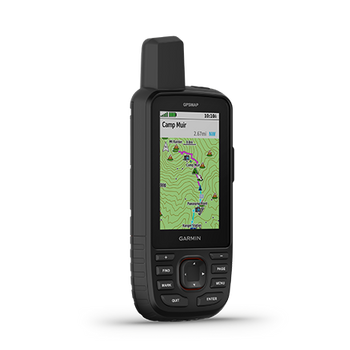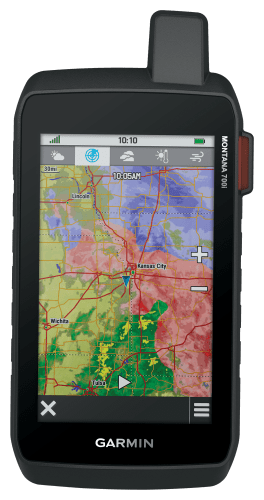- Reliable satellite communication
- Durable and rugged design
- Accurate and detailed maps
- Large, clear display
- Advanced navigation features
- Rugged and durable
- Expensive
- Heavy compared to other models
- Expensive
- Heavy
Garmin GPSMAP 66i vs Garmin Montana 700i
The world of outdoor navigation has never been more exciting, thanks to advancements in technology and innovative products from leading brands like Garmin. In this comparison, we'll delve into two top-notch handheld GPS units: the Garmin GPSMAP 66i and the Garmin Montana 700i. Both devices are designed for adventurers, hikers, and outdoor enthusiasts who require reliable and feature-rich navigation tools.
Design and Display
The Garmin GPSMAP 66i boasts a rugged design with a compact body, weighing in at approximately 8.1 ounces. Its 3-inch color display features a resolution of 240x400 pixels, providing clear visibility even in bright sunlight. The device is also water-resistant, with an IPX7 rating, making it suitable for use in wet conditions.
In contrast, the Garmin Montana 700i has a larger and more premium design, weighing around 11 ounces. Its 5-inch touchscreen display offers a higher resolution of 480x800 pixels, providing an immersive experience for users. The Montana 700i also features a water-resistant design with an IPX7 rating, ensuring it can withstand the elements.
Navigation and Mapping
Both devices offer robust navigation capabilities, including GPS, GLONASS, and Galileo support. However, the Garmin GPSMAP 66i comes preloaded with TopoActive maps, which provide detailed topographic information for the United States and Canada. The device also supports additional mapping options, such as BirdsEye Satellite Imagery and HuntView.
The Garmin Montana 700i, on the other hand, features a more comprehensive mapping package, including TopoActive maps, as well as City Navigator NT maps for turn-by-turn directions in urban areas. Additionally, the device supports Garmin's proprietary Birdseye Satellite Imagery and offers built-in Wi-Fi connectivity for easy map updates.
Communication and Connectivity
One of the standout features of the Garmin GPSMAP 66i is its built-in InReach satellite communication technology, which allows users to send and receive messages, as well as trigger SOS alerts in emergency situations. The device also supports Bluetooth and ANT+ connectivity for pairing with other devices, such as smartphones and heart rate monitors.
The Garmin Montana 700i also features built-in Wi-Fi and Bluetooth connectivity, enabling seamless map updates and data transfer between devices. However, it does not come with InReach technology, which may be a consideration for users who require satellite communication capabilities in areas with no cellular coverage.
Battery Life and Power
In terms of battery life, the Garmin GPSMAP 66i offers up to 16 hours of use on a single charge, depending on the mode and settings. The device also features a rechargeable lithium-ion battery and supports USB charging.
The Garmin Montana 700i has a longer battery life, with up to 18 hours of use in GPS mode and up to 4 weeks in expedition mode. The device also features a rechargeable lithium-ion battery and supports USB charging, as well as an optional external power pack for extended use.
Conclusion
When it comes to choosing between the Garmin GPSMAP 66i and the Garmin Montana 700i, users should consider their specific needs and preferences. Both devices are excellent examples of handheld GPS units, offering advanced navigation features, rugged designs, and reliable performance. However, the GPSMAP 66i is more compact and feature-rich, with built-in InReach technology, making it an ideal choice for adventurers who require satellite communication capabilities.
On the other hand, the Garmin Montana 700i offers a larger display, more comprehensive mapping package, and longer battery life, making it suitable for users who prioritize immersive navigation experiences and extended use in the field. Ultimately, both devices are top-notch handheld GPS units that can enhance any outdoor adventure, providing users with the confidence to explore new territories and stay connected in areas with limited cellular coverage.































